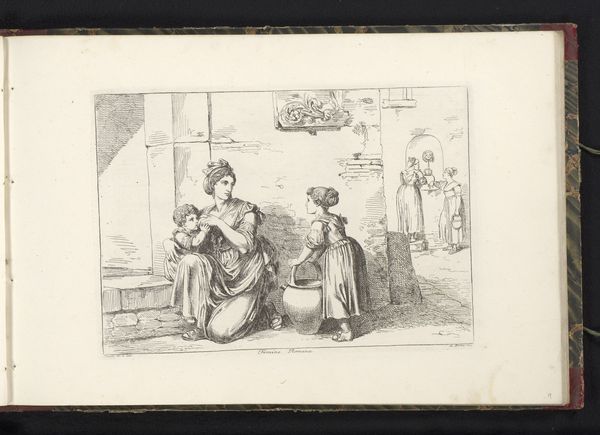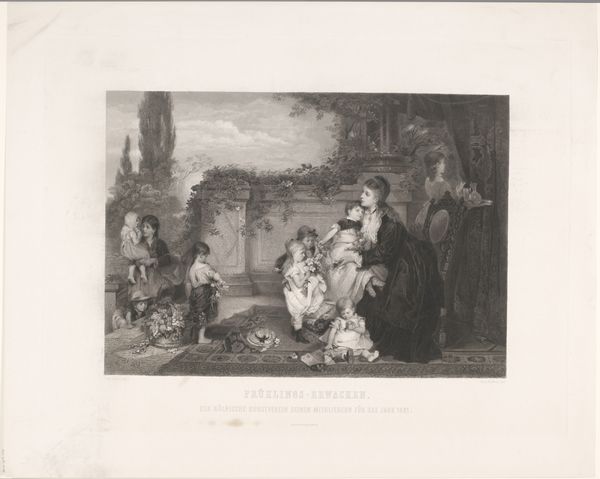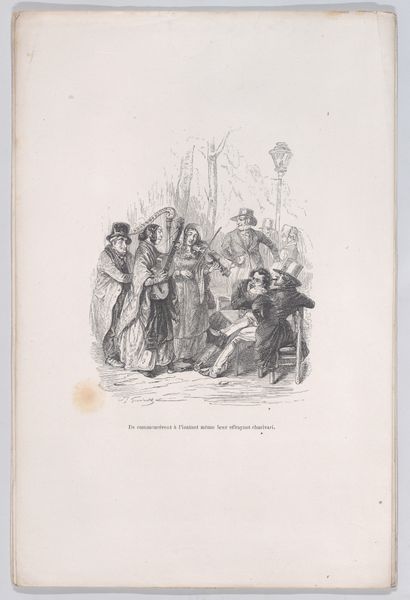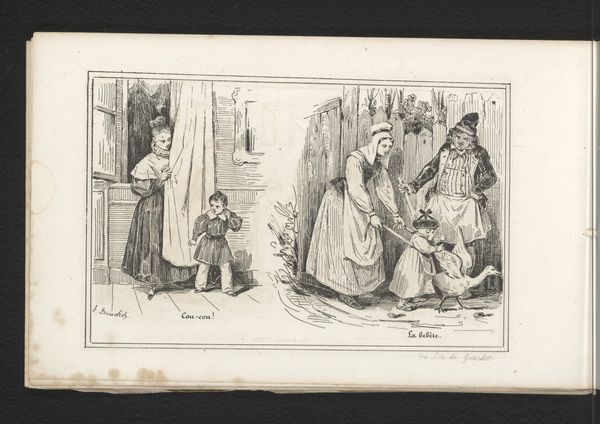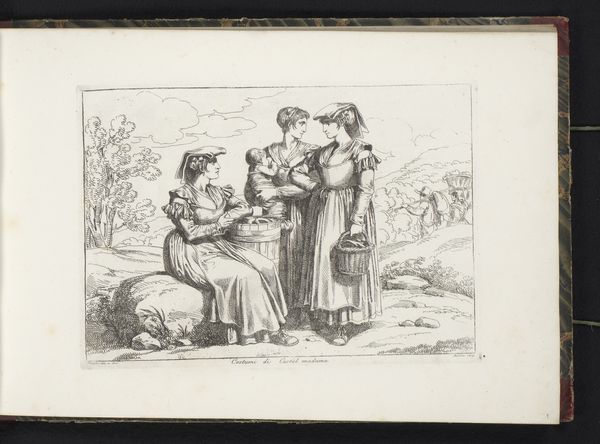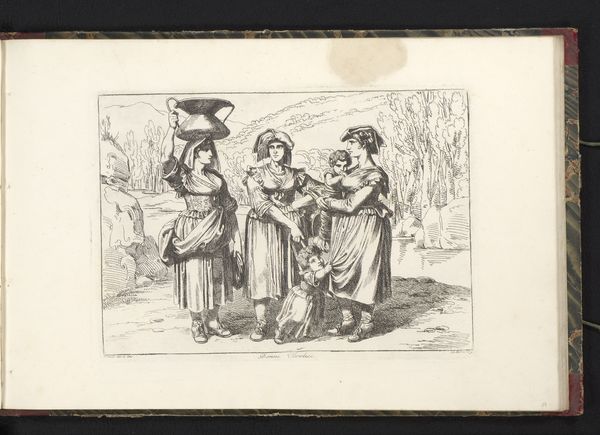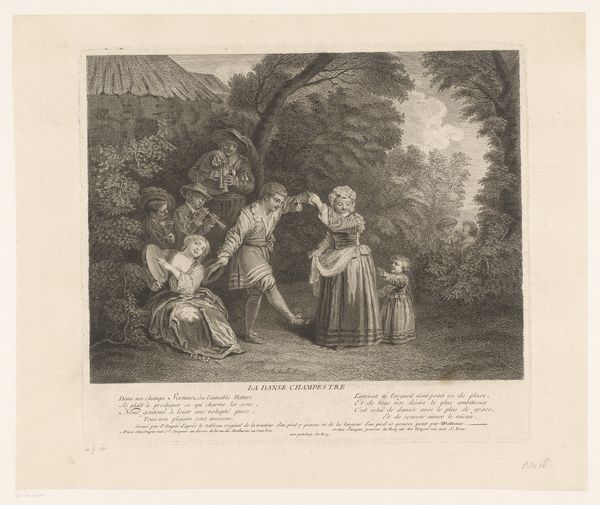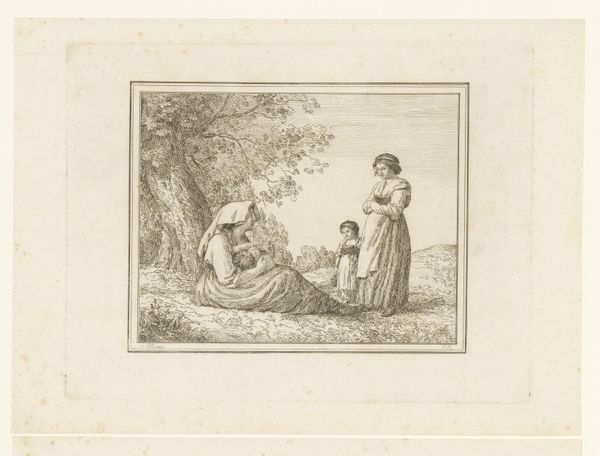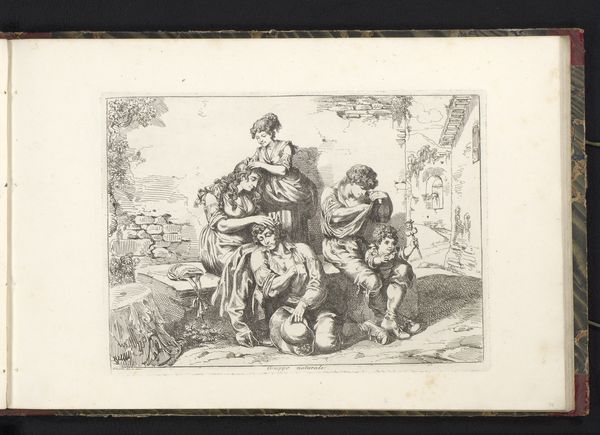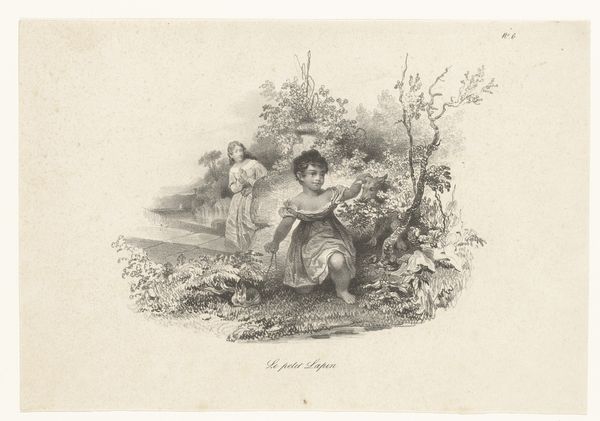
Dimensions: height 217 mm, width 286 mm
Copyright: Rijks Museum: Open Domain
Editor: Here we have "Landscape with Four Girls and a Boy" by Alexander Ver Huell, made with watercolor around the mid to late 19th century. The palette is really soft and the scene seems like a snapshot of leisure. What symbols or deeper narratives do you perceive within this seemingly simple scene? Curator: It's tempting to view it solely as a genre scene, isn't it? But consider the umbrella, almost weapon-like in its angle, the fallen hat, the way the boy is slightly detached. It recalls imagery of the idyllic past clashing with nascent modern identities and the subtle unease. The girls themselves evoke figures from classical allegories, perhaps representing virtues or seasons, but placed in this specific landscape... do you think that modifies or distorts the expected reading? Editor: Definitely distorts it, especially considering the possible time period it was made. The suggestion of the past combined with the uncertainty or tension creates a complex and unsettling impression, despite the prettiness of the image. It makes me wonder about the symbolism of flowers. Are these traditional attributes, or is something else at play? Curator: Excellent question. Think about the rise of flower symbolism in the Victorian era; a language all its own. So are these symbols deliberately deployed, hinting at hidden intentions or emotions? Or are they part of a more superficial fashionable staging? Either way, that gesture toward emblematic languages reflects back and infuses our reading of this tableau. What have you gained by focusing in this symbolic sense? Editor: Seeing the image not just as a nice scene, but one that is packed with hidden meanings adds so much richness. I think it invites viewers to participate in decoding it, in their own way, and based on their experience and background. Curator: Precisely! It is like peering through a veil and hinting that meanings always circulate both intersubjectively and transhistorically. Art constantly engages cultural memory as it builds a conversation for new interpretation.
Comments
No comments
Be the first to comment and join the conversation on the ultimate creative platform.

